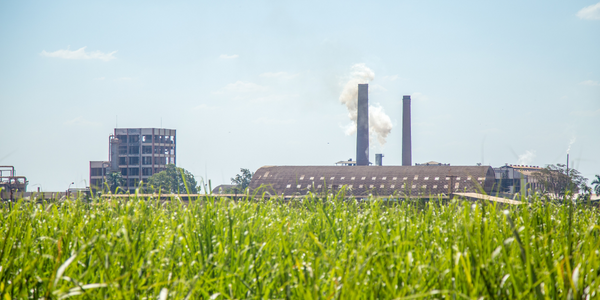Customer Company Size
Large Corporate
Region
- Europe
Country
- United Kingdom
Product
- Ecometrica EHS Module
- BSI Entropy
Tech Stack
- API Integration
Implementation Scale
- Enterprise-wide Deployment
Impact Metrics
- Environmental Impact Reduction
- Cost Savings
Technology Category
- Application Infrastructure & Middleware - API Integration & Management
Applicable Industries
- Food & Beverage
- Retail
Applicable Functions
- Business Operation
Services
- System Integration
About The Customer
Associated British Foods plc (ABF) is a British multinational food processing and retailing company, listed on the London Stock Exchange and a constituent of the FTSE 100 Index. It is the world’s second-largest producer of both sugar and baker’s yeast. The group’s brands include household names such as Mazola, Ovaltine, Ryvita, Jordans and Twinings. Its retail division, Primark, has around 200 stores with over 6,500,000 sq ft of selling space across Austria, Belgium, Germany, Ireland, the Netherlands, Portugal, Spain and the United Kingdom. The company has 113,000 employees in 47 countries worldwide and generates a revenue of 13.3 billion GBP.
The Challenge
Associated British Foods plc (ABF) is a multinational food processing and retailing company with a presence in 80 countries and several business sectors. The company has been publishing environmental data for many years. However, ABF's existing system, BSI Entropy, is a pure data collection tool with no built-in emission factors or the ability to run calculations for UK Mandatory Carbon Reporting compliance. With a presence in so many countries, identifying and maintaining accurate and up-to-date emissions factors was a constant and complex issue for ABF.
The Solution
ABF implemented the Ecometrica EHS module, which is available as an application programming interface (API). This allows it to “plug in” to third-party software and carbon-enable it in the background, without staff having to learn anything new. Ecometrica configured the API to interact with ABF’s existing BSI Entropy solution to provide all of the back-end functionality to create complete environmental assessments and reports from previously entered data. This meant that ABF could keep the BSI interface, which nominated employees were used to using, while the Ecometrica API would collect the required data and run all calculations. Ecometrica maintains the emission factors database for all the countries that ABF is present in, and provides custom factors for categories such as sugar beet.
Operational Impact

Case Study missing?
Start adding your own!
Register with your work email and create a new case study profile for your business.
Related Case Studies.

Case Study
The Kellogg Company
Kellogg keeps a close eye on its trade spend, analyzing large volumes of data and running complex simulations to predict which promotional activities will be the most effective. Kellogg needed to decrease the trade spend but its traditional relational database on premises could not keep up with the pace of demand.

Case Study
HEINEKEN Uses the Cloud to Reach 10.5 Million Consumers
For 2012 campaign, the Bond promotion, it planned to launch the campaign at the same time everywhere on the planet. That created unprecedented challenges for HEINEKEN—nowhere more so than in its technology operation. The primary digital content for the campaign was a 100-megabyte movie that had to play flawlessly for millions of viewers worldwide. After all, Bond never fails. No one was going to tolerate a technology failure that might bruise his brand.Previously, HEINEKEN had supported digital media at its outsourced datacenter. But that datacenter lacked the computing resources HEINEKEN needed, and building them—especially to support peak traffic that would total millions of simultaneous hits—would have been both time-consuming and expensive. Nor would it have provided the geographic reach that HEINEKEN needed to minimize latency worldwide.

Case Study
Improving Production Line Efficiency with Ethernet Micro RTU Controller
Moxa was asked to provide a connectivity solution for one of the world's leading cosmetics companies. This multinational corporation, with retail presence in 130 countries, 23 global braches, and over 66,000 employees, sought to improve the efficiency of their production process by migrating from manual monitoring to an automatic productivity monitoring system. The production line was being monitored by ABB Real-TPI, a factory information system that offers data collection and analysis to improve plant efficiency. Due to software limitations, the customer needed an OPC server and a corresponding I/O solution to collect data from additional sensor devices for the Real-TPI system. The goal is to enable the factory information system to more thoroughly collect data from every corner of the production line. This will improve its ability to measure Overall Equipment Effectiveness (OEE) and translate into increased production efficiencies. System Requirements • Instant status updates while still consuming minimal bandwidth to relieve strain on limited factory networks • Interoperable with ABB Real-TPI • Small form factor appropriate for deployment where space is scarce • Remote software management and configuration to simplify operations

Case Study
Energy Management System at Sugar Industry
The company wanted to use the information from the system to claim under the renewable energy certificate scheme. The benefit to the company under the renewable energy certificates is Rs 75 million a year. To enable the above, an end-to-end solution for load monitoring, consumption monitoring, online data monitoring, automatic meter data acquisition which can be exported to SAP and other applications is required.

Case Study
Coca Cola Swaziland Conco Case Study
Coco Cola Swaziland, South Africa would like to find a solution that would enable the following results: - Reduce energy consumption by 20% in one year. - Formulate a series of strategic initiatives that would enlist the commitment of corporate management and create employee awareness while helping meet departmental targets and investing in tools that assist with energy management. - Formulate a series of tactical initiatives that would optimize energy usage on the shop floor. These would include charging forklifts and running cold rooms only during off-peak periods, running the dust extractors only during working hours and basing lights and air-conditioning on someone’s presence. - Increase visibility into the factory and other processes. - Enable limited, non-intrusive control functions for certain processes.








